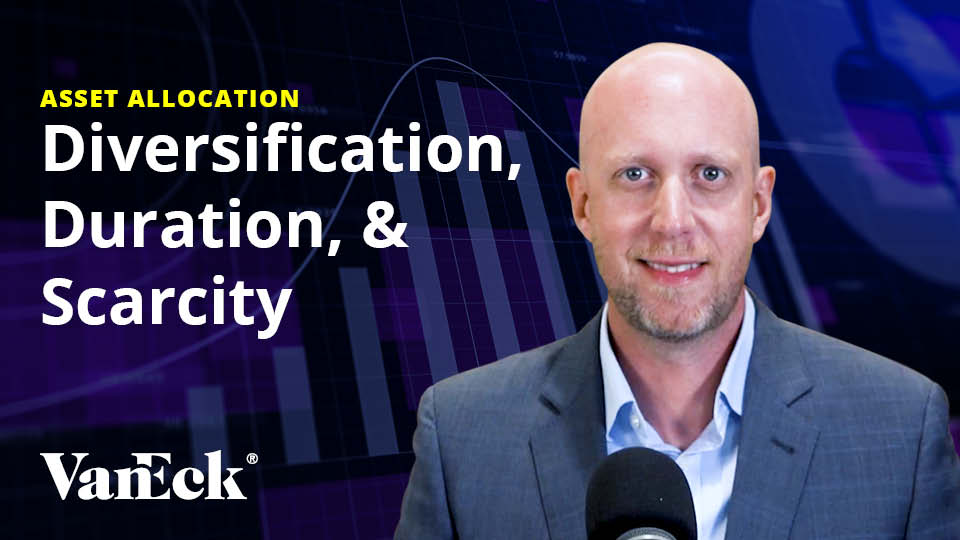Multi-Asset Solutions: Macro July 2024 Update
15 August 2024
Read Time 4 MIN
Swing At the Fat Pitches: Heightened Volatility Creates Bargains
Overview
The first half of the year has been nothing short of spectacular for the S&P 500 Index. However, financial conditions are changing due to concerns over slowing global growth, inflation, huge deficits, and geopolitical tensions. The offsetting forces of extreme government deficit spending and tight monetary policy are creating a peculiar economic regime that is contributing to a debt spiral and financial instability, likely leading to stagnating growth and elevated inflation. Bifurcations are being made between the beneficiaries of fiscal excess and the casualties of monetary tightening, allowing the economy to sputter without falling into a recession.
Over the medium to long term, innovation through artificial intelligence (“AI”) is creating a mega catalyst. We believe that AI will be at least as disruptive as the internet was in the 1990s. And, like AI right now, there was incredible enthusiasm around the internet. In the end, the internet over-delivered expectations and drastically changed the world. We believe that AI will eventually do the same.
Massive innovation changes society; not every company involved will survive or thrive. The internet broke down borders, increased competition, and improved the quality of life for billions of people worldwide. Companies that failed to innovate are no longer with us. Netflix replaced Blockbuster, and Amazon replaced Sears. There are countless other examples. Expect the same to happen once again.
However, over the near term, corporations are spending billions of dollars on AI, and slowing earnings growth is forcing tough questions on how and when there will be a return on this investment. During tough times, valuations and spending become a focus point, and that is what is happening now.
Stay diversified, stay invested, and swing at the fat pitches because periods of heightened volatility create bargains for the astute investor.
Stocks
Slowing growth is forcing a re-think on companies with questionable valuations (Magnificent 7) and those that haven’t participated in this great bull run (small-cap and value-oriented equities). This led to a rotation where small-cap value stocks (Russell 2000 Value Index) outperformed the Mag 7 stocks by 13% in July.
Nvidia was breaking the laws of financial gravity and is finally showing weakness. Nvidia is now down over 20% from its all-time high in mid-July. However, context is always key. Nvidia is still up well over 100% year-to-date and boasts a market capitalization of $2.7 trillion. If Nvidia’s market cap continues to expand at its rate this year, it will be larger than the market cap of the entire S&P 500 Index in less than three years. Do we think that will happen? Absolutely not. It is way too early to crown any winners. The success of Nvidia and others will attract competition. That competition will create future rounds of winners and losers. Yahoo once had a market cap greater than Apple, Google, or Amazon!
Bonds
We’re in the midst of an epic battle between monetary and fiscal policies. Monetary policy is fighting inflation, primarily through higher interest rates, which force the economy to deleverage. Simultaneously, deficit spending during an economic expansion is adding fuel to the economy.
The market expects the Fed to begin cutting interest rates at its September meeting and reduce them by 0.75% in total by 2024.
Interest rates across the treasury curve fell while credit spreads, or the premium paid to assume default risk, widened modestly in July as investors favored the safety of U.S. government debt due to increased economic uncertainty.
Investors in fixed income are advised to proceed with caution. Now is not the time to make big credit or duration bets. The timing of the next recession, the future path of inflation, and many other economic and political risks that may impact both interest rates and credit spreads create a murky path forward, at best.
Commodities
July was not a good month for most commodities as prices fell based on concerns about global demand. Central to global growth concerns is China, which is the largest importer of crude oil and many other commodities. Beijing recently supported its economy through interest rate cuts. Energy, industrial metals, and agricultural commodities were down 8%, 7%, and 5%, respectively.
Alternatively, gold prices advanced 4% during the month as the same bearish factors that created headwinds for other assets caused tailwinds for gold. In our view, gold is the ultimate store-of-value asset and an essential component of any diversified asset allocation.
Digital Assets
The big news in digital assets during the month was the launch of the physically backed ether ETPs. These ETPs raised $800 million in the first two days of trading, following the launch of the spot bitcoin ETPs in January.
Bitcoin is now around 15 years old and, like any teenager, is fighting for its place in the world. Bitcoin and other digital assets are maturing, and investors are noticing. The launch of physically backed digital asset ETPs further institutionalizes these assets and dramatically increases the ease of ownership for investors.
New asset classes are not created frequently. If you are still staying on the sidelines, stop. Failure to allocate to bitcoin has only harmed your performance. Every investor should consider allocating 1-3% of their portfolio to bitcoin.
